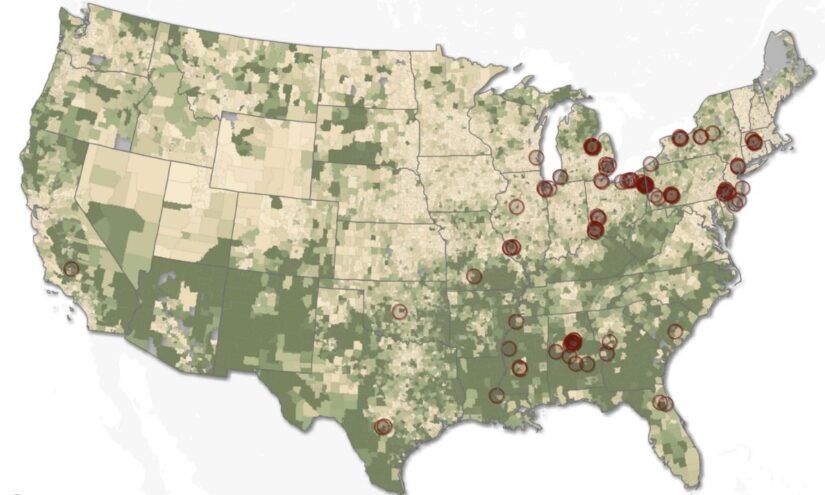During this summer, a team of students from MIT embarked on a journey to the sou …
Explore the Interactive Map Revealing School Segregation by Race and Class in the U.S.
Jennifer Livingstone

In the midst of the Dallas school district in Texas, there lies a longtime island known as Highland Park.
Highland Park, an enclave resisting annexation since the mid-20th century, maintains a distinct school district with approximately 6,700 students, entirely encircled by the much larger 139,723-student Dallas Independent School District. An illuminating report from New America’s Education Funding Equity Initiative, recently published, unveils the pronounced divergence in student demographics and services between the two districts due to intentional racial and economic segregation.
A comprehensive, interactive map embedded in the report enables users to delve into racial and class segregation within their local school districts.
Dallas enrolls 94% students of color while only 18% in Highland Park. This segregation extends beyond race; less than 4% of Highland Park students live in poverty, whereas a quarter of Dallas students come from impoverished backgrounds, the city’s most underserved communities residing just adjacent to Highland Park.
Discrepancies between school districts nationwide, resulting in unequal learning opportunities for students, are a direct outcome of America’s varied school district borders. A study by New America, a Washington, D.C.-based think tank, emphasizes the significant impact of localized property tax funding on school disparities, leading to stark divisions between property-endowed and low-income-serving districts.
Policy-driven housing segregation practices like redlining and exclusionary zoning, explicitly aimed at creating racial and economic divides, contribute to the stark contrasts in residential patterns and school budgets, as highlighted by Zahava Stadler, a project director at New America.
Analyzing over 13,000 school districts and 25,000 neighboring district borders nationwide, researchers found an average 14% fluctuation in student population by race and socioeconomic status, intensifying significantly along the 100 most racially or economically segregated district borders.
District consolidation presents a solution to promote equity, generating diverse and resource-accessible schools, although the individual context of each area must be considered. In South Dakota, the sharp contrast between the Custer and Oglala Lakota School Districts underscores the complexity of racial and economic disparities within local school borders.
Despite the disparity in funding, Oglala Lakota County Schools in South Dakota face challenges in ensuring equitable access to quality education due to historical trauma, bureaucratic hurdles, and fiscal limitations, hindering their ability to meet the unique needs of Native students.
While students on the reservation may lack state-of-the-art facilities, the cultural and linguistic support they receive reflects and values their indigenous heritage, a pivotal factor in their educational experience compared to a potentially less inclusive environment in Custer School District.
Providing a culturally enriched educational atmosphere ensures students feel connected and validated in their identity, shielding them from racism and preserving their heritage and community ties.

